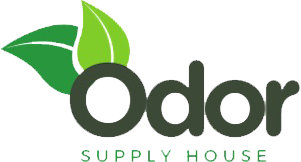
Why Cleaning Is the Crucial First Step in Odor Removal (And What Happens If You Skip It)
Share
Let’s be honest—nobody wants to walk into a home or business and be hit with that smell. Whether it’s pet odor, cigarette smoke, mold, or mystery funk from who-knows-where, bad odors can ruin first impressions and make people wonder what’s going on behind the scenes.
But before you reach for that can of air freshener or fancy plug-in, let’s talk about something that often gets overlooked: cleaning.
Yes, good old-fashioned cleaning is the essential first step in any successful odor removal process. Without it, you’re just fighting a losing battle—trying to cover up or neutralize smells that are literally clinging to dirt, oils, and surfaces. Let’s break it down.
Why Cleaning Comes First
Odors are often tied to physical particles—organic matter, bacteria, mold spores, pet dander, oils, or residue—that are sitting on surfaces or embedded deep within porous materials. If those odor-causing particles are still present, even the best odor removal products will struggle to do their job.
Imagine trying to deodorize a gym bag full of sweaty clothes without washing them first. No amount of spray is going to make that smell go away for good.
Cleaning removes the source material, which makes odor treatment products (like neutralizers, foggers, or ozone) far more effective. It also prevents smells from returning later.
The Steps of Professional Odor Removal
While every situation is different, a successful odor removal process usually follows a multi-step plan:
1. Identify the Source
Start with a thorough inspection. Is the odor coming from:
- Pets (urine, dander)?
- Smoke (tobacco, fire)?
- Mold or mildew?
- Cooking odors?
- Garbage or decomposition?
Knowing the source will determine what cleaning methods and products are appropriate.
2. Remove the Source
If there’s still a source present—like soiled carpet padding, old food, moldy drywall, or a dead rodent—get it out of there. Physical removal of the odor source is the fastest way to stop odor at its root.
3. Clean All Affected Areas
This is where many people try to cut corners. Don’t.
- Use a professional-grade cleaner to deep clean:
- Hard surfaces (walls, floors, cabinets)
- Soft surfaces (carpets, upholstery, curtains)
- HVAC vents and filters
- Behind and under furniture or appliances
Depending on the source, you might use enzyme-based cleaners (great for urine), degreasers (for smoke or kitchen odors), or even antimicrobial products (for mold).
4. Apply Odor Neutralization or Treatment
Once the area is clean and dry, it’s time to treat what remains. Here’s where things get a little more technical—because not all odor treatments are the same.
Let’s break down the most common types:
Odor Masking
What it is:
Masking uses strong scents (like perfumes or essential oils) to cover up unpleasant odors temporarily.
Pros:
Cheap, quick, and can make a space seem cleaner for a short time.
Cons:
It doesn’t actually solve the problem. The source is still there, and eventually the mask fades. This is like spraying cologne instead of showering.
When it’s used:
Only in minor situations or as a finishing touch after actual odor removal.
Odor Pairing
What it is:
This involves using one chemical to bind with another—changing the way our nose perceives the smell. It's like combining two puzzle pieces to cancel each other out.
Example:
Some smoke odor products use odor pairing agents to neutralize the harshness of burnt smells.
Pros:
More effective than masking and fast-acting.
Cons:
Can be temporary if the source isn't cleaned or fully removed.
Odor Neutralizing
What it is:
Neutralizers chemically alter the odor-causing molecules, rendering them non-odorous. They don’t cover up; they deactivate the odor at the molecular level.
Pros:
Very effective on organic odors like pet smells, food, or body odor. Great for textiles and hard-to-clean materials.
Cons:
Still works best when used after cleaning.
Odor Elimination
What it is:
True odor elimination means the smell is gone, not just hidden or neutralized. This may involve oxidizers like ozone or chlorine dioxide, or biological treatments like enzymes and probiotics.
Pros:
Long-lasting, and in some cases, permanent.
Cons:
Some methods (like ozone) require vacating the space and using caution. Others, like fogging, are only effective after surfaces are properly cleaned.
Odor Control
What it is:
Odor control refers to long-term strategies for keeping spaces smelling clean over time—think HEPA filters, probiotics, or routine maintenance.
Pros:
Essential for preventing odors from returning, especially in high-risk spaces like pet facilities, gyms, or kitchens.
Cons:
Not a solution by itself—it’s maintenance, not removal.
What Happens If You Skip Cleaning?
Skipping cleaning means:
- You might “trap” the odor with foggers or sealers
- Odors will likely return once masking agents fade
- Treatment products won’t penetrate residue or grime
- You’ll waste time and money re-treating the same areas
Think of odor removal like dental hygiene: brushing (cleaning) comes before mouthwash (treatment).
Final Thoughts: Cleaning Is the Foundation
If you want real results, cleaning isn’t optional—it’s foundational. It sets the stage for everything that comes next and ensures your odor control products actually work.
At the end of the day, no one wants to live, work, or sell a property that smells “off.” By starting with a deep clean, identifying the source, and following up with the right neutralization strategy, you can reclaim your space and breathe easier—literally.
Need Help?
At Odor Supply House, we specialize in professional odor removal that doesn’t just mask—it eliminates. Whether it’s from pets, mold, smoke, or mystery smells, we’ll identify the source, clean it thoroughly, and treat it using science-backed products that actually work.
Want a fresh start? Reach out today.
#OdorRemoval #CleanAirMatters #ProfessionalCleaning #OdorControl #OdorElimination #IndoorAirQuality #CleaningTips #MoldOdor #PetOdor #SmokeOdor #EnzymeCleaners #ProbioticCleaners #DeepCleaning #HealthyHome #IAQ #DeodorizingSolutions #FreshStart #HomeCleaningTips #CleaningMatters #NoMoreOdors
